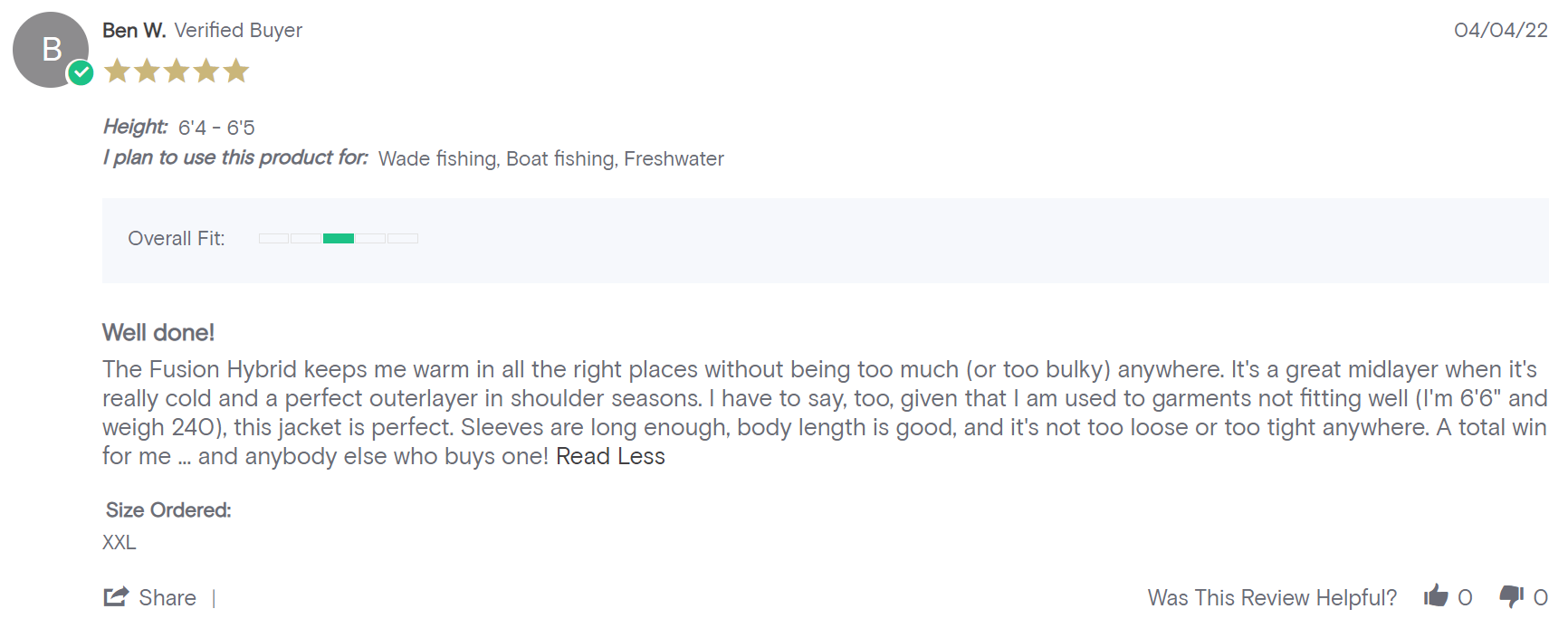Consider these three messages:
“Help save the environment by reusing your towels”
“Past guests reused their towels, please reuse yours”
“Hang up your towels if you would like to reuse”
Can you tell which phrasing has the most influence?
You’re not wrong to think that saving the environment makes for a very compelling call to action. However, as Cialdini et al. (2008) concluded, social proof is more influential than the noble request to “Save the planet.”
The message asking hotel visitors to reuse their towels because past guests did is the most swaying.
Why?
We like to think of ourselves as independent thinkers, but our innate human nature is to look for guidance from our peers when in unfamiliar situations.
This is the “I’ll have what they’re having” phenomenon that’s become increasingly important to ecommerce today.
Marketers are now facing growth challenges and have to work harder at gaining new customers in a noisy and crowded marketplace.
Why Is Social Proof Important?
The average shopper today comes across your well-placed ad on social media, among thousands, and looks for social cues to help them pick you. These signals include:
- Expert endorsements – Provide a factual analysis of the value of your products or services
- Celebrity and influencer endorsements – Build hype and intrigue for your latest products
- Customer reviews and testimonials – Provide an experiential account of buying and using your products or services
- Case studies – Offer a deeper insight into your brand’s values and mission statement
- Accolades and awards – Give an authoritative verification of your marketing messages
- Social media pages – Give a picture of your customer base
In this way, social proof has taken the edge out of big-budget advertisements and risen to exciting titles such as “The new frontier of marketing” and “The future of marketing.”
There’s even an entire industry dubbed “the reputation economy” devoted to gathering social proof with well-established brands such as Trustpilot and TripAdvisor.
These companies have become so important that sectors such as tourism and hospitality depend on them. It’s now an industry standard for travelers to check out a restaurant’s review on TripAdvisor before committing to a visit.
But social proof’s commanding influence isn’t limited to the travel industry, ecommerce has largely taken off because of it, too.
Social proof is the solution to gaining the trust of strangers when shopping online, which has seen to the rise of platforms like Amazon and Craigslist. All shoppers need to do to vet a seller is check out their reviews.
“A brand is no longer what we tell the consumer it is. It’s what consumers tell each other.” – Scott D. Cook, American businessman
Despite social proof’s overwhelming importance in marketing today, few online stores have an effective strategy in place.
To help, we’ve gathered nine examples to guide you through crafting a social proof strategy for your website. As you go over our examples you’ll learn:
- Why micro-influencing feels more authentic than a celebrity’s endorsements
- What makes customer reviews more effective
- Why your client list ordering matters
- The best software to use for better website traffic and conversions
First, let’s take a deeper look at how social proof has impacted online stores.

How Has Social Proof Impacted Ecommerce?
We as online retailers have a problem; potential customers don’t trust us. Not when the words “best” and “leading” exist on virtually all websites.
As such, growth remains elusive for some stores, so we’ve turned to social proof marketing with heuristic messages such as “80% of people who liked this product also bought…” or “ Five people are currently viewing this product.”
It’s now an industry standard to have these and other forms of social proof built into our websites, but how effective are they?
Well, a recent study found that:
- 47% of online consumers consult reviews before a purchase.
- Verified buyer reviews increase purchase probability by 15%.
- Consumers visit a website immediately after reading positive reviews.
These findings highlight just how effective social proof is at boosting traffic and conversions, yet it only works when used appropriately. For instance, product reviews with only positive comments are less convincing and trust-building than reviews featuring improvement notes.
How to Use Social Proof in Ecommerce
Use social proof strategies to target undecided buyers picking between multiple and similar options. In essence, between you and your closest competitors.
Uncertainty and overwhelming options make decision-making difficult. So, whoever helps these buyers the most will win their purchase.
The following examples demonstrate the best practices for the various forms of social proof for your website.
Example 1 – Expert Endorsements
Expert endorsements are excellent trust builders because they enable you to leverage goodwill from already established brands.
This tactic often involves collating endorsing brands on your website so your placement matters.
Place your strongest endorsers at the center for maximum visibility. Human eyes focus on the center when looking at a group or skimming through a website.
Here’s an example from Duckworth, a company that retails wool clothing for the great outdoors. Backpacker Magazine is at the center of Duckworth’s client list because they share a target audience of campers and hikers.
Notice that Men’s Journal isn’t centered because Duckworth also retails female clothing. Also note how early the expert endorsements feature on the website.

Example 2 – Celebrity Endorsements and Micro-Influencers
Historically, we’ve always adored celebrities, but with the invention of the internet, our interest in their personal lives took up a whole new dimension. So did their influence over our lives and commerce.
Today, celebrity endorsement is a mainstay of digital marketing and an excellent way for online stores to build confidence in website visitors. These endorsements provide that social proof needed to nudge deliberating buyers over the fence.
Here’s an effective example by Fashion Nova, which partnered with rapper Cardi B for their new line of suits.

This strategy proved successful because Fashion Nova needed to amplify the fact that their clothes worked for voluptuous body types.
Featuring Cardi B alongside plus-sized models generated hype for Fashion Nova’s new collection while providing social proof for their niche; curvy women.
Alternatively, micro-influencers are a cheaper but effective social proof option. These influencers typically have between 10,000 to 50,000 followers, which is substantial enough to generate leads for your website.
Here’s an example by LaCroix Sparkling Water.

This strategy works because LaCroix’s audience—American millennials and young adults—appreciates the authenticity of a small-time beverage company. Micro-influencers give LaCroix that authentic, casual feel that’s hard to achieve with megastars.
Example 3 – Customer Reviews and Testimonials
Social cognition is a powerful influencing strategy that explains why reviews and testimonials are effective.
Essentially, social cognition is how we process, remember and use information; by observing and imitating others. It’s how a child learns how to walk and how we generally learn new behavior.
Social cognition is also how potential buyers learn to buy from your website. They will study your reviews and form an opinion. For instance, “What sort of person buys from your website? Are they like me? Where are they from?”
As a result, testimonials and reviews are most influential when your visitors find them relatable. This involves more contextual details such as photos, location, and names.
Here’s an excellent product review for Skwala Fishing that’s packed with contextual information such as the clothing size ordered and the physical stature of the reviewer.

Now, compare Skwala’s product review to this positive Hoodie Lab review on TrustPilot. Which one’s more influential?

Both reviews do well to highlight their respective product benefits such as insulation and comfort. However, the additional contextual information on Skwala’s review makes it more relatable and convincing to visitors.
Also worthy of note is where you place your product reviews. Having the reviews right under or beside your product images is much more effective than placing them as a list at bottom of the page.
This position immediately associates products with comments and increases click-through rates. Here’s an excellent example by Duckworth.

Example 4 – Accolades and Awards
External recognition on your website is more credible than company claims. It shows your visitors that a separate body reviewed your products or services and verified your marketing message, like an external audit.
Even so, not all accolades give you credibility. This strategy works best with industry-relevant awards, such as government decorations, professional association trophies, or recognition from reputable brands.
Here’s an example from Cool Blue featuring the Tweakers Award for Best webshop 2021.

Tweakers is a reputable Dutch tech news website with links to the Nielsen Company, a global research firm. This makes the Tweakers Award very credible and an excellent social proof for Cool Blue.
Awards and accolades are also good for search engine optimization (SEO). They enable you to link out to authoritative websites, which helps Google understand your niche.
Here’s another example from Oboz Footwear featuring an accolade from Trees for the Future, the nonprofit organization.

This award helps Google profile Oboz Footwear’s ideal customer; a person who cares about social companies and the environment and also loves the great outdoors. This understanding leads to better search rankings and makes it easier for Oboz to gain new customers.
Example 5 – Client Lists
What’s the first thing that comes to mind when you think of Caterpillar Inc?
Industry leader? Customer-centric?
With that in mind, what’s your opinion of a company that closely associates with such a brand?
It’s safe to say that a company that closely associates with Caterpillar Inc must share its commendable qualities. Why else would they work together?
This perception is why client lists work and why Tadpull features the global giant at the center of its customer list; the focus of one’s gaze.

Example 6 – Social Following
No one wants to be “The last to know” about an opportunity, a hot new deal, that great new hangout, or anything for that matter. This is why we regularly check out our friends’ social pages to catch up on the latest trends.
Marketers refer to this phenomenon as the “Fear of Missing Out” (FOMO), where consumers would rather make an impulse buy today than regret the lost opportunity later.
When used effectively, this perception is an excellent lead generator and social media is a particularly effective tool at that. For instance, branded Instagram hashtags for your limited-run product lines let you create that FOMO feeling that drives conversions.
Here’s a hashtag example from Tarte Cosmetics, #trippinwithtarte, which generated over 22,000 posts.

Featuring such hashtags on your website builds curiosity for your brand and that FOMO effect that leads to conversions.
Example 7 – Product Tags
Visitors to your website will find tags such as “top-rated” or “best-sellers” reassuring, especially if they’re skimming through a huge catalog.
These tags help them narrow their search and encourage your visitors to delve into individual product details. As result, they’re more likely to find something interesting, maybe a unique benefit, that encourages conversion.
Here’s an example product tag on the Duckworth website.

Also, the product tag “Other top-rated products” appears right below the details of one product as a preset filter. This encourages visitors to quickly shift to similar products and also view their details.

As a result, the visitors are likely to spend more time viewing product specifications on the Duckworth website and find interesting features to help them decide.
Here’s another intriguing product tag by Outdoor Research, “Award winner.”

This designation immediately evokes a sense of curiosity about the products listed under it.
“Why did they win an award?” “What makes them so special?”
Naturally, visitors will be drawn to these products, if only to find the answer to these questions. This is the same allure for the product tag, “Editor’s Choice 2021.”

Example 8 – Case Studies
You probably have statistical proof that your solution works, which explains the “best-seller” product tag on your website. However, case studies are more appealing to the human side of the story and therefore more influential.
It’s always inspiring to read about how a product transformed its users’ life, making case studies very effective at generating interest from potential buyers.
Here’s one such case study by Outdoor Research on their innovative product the Insect Shield.

From the onset, the reader is immediately drawn to the title, “Insect-repellent clothing” and is curious to learn how this product works. For instance, “Is the fabric treated with insect-repellent chemicals?” “How long does the repellence last?”
The second captivation point is the statement, “Originally developed for the military.” It makes a reader think of how effective this product must be since military-grade products are the best of the best.
Outdoor Research has an entire page dedicated to similarly inspiring stories about various products to maximize visibility and appeal to various shoppers. In essence, they have a case study for most of their products.

Example 9 – Stock Count
You need to create a sense of urgency for your website visitors to act and displaying your stock levels is an excellent way to do this.
When a potential customer realizes that there are, “Only five items left,” it generates that FOMO effect that encourages them to act while they still can.
Here’s an example of this strategy by John Lewis.

Notice how most of the other sizes are crossed out to indicate their unavailability and the single available size, 36R, has only seven units left. Anyone considering this purchase will naturally be triggered by the limited status of this product.
Meanwhile, running out of stock also proves the value of your products or that you’re offering a great deal. This builds anticipation and sets up demand for your restock, for instance, through preorders.
Here’s an example of this strategy by Renegade Running.

For anyone learning about this brand, the preorder strategy proves the perceived value of their products and encourages them to join in.
The following table summarizes the key ideas from each social proof example.
So there you have it, nine social proof examples to help your craft a winning strategy for your website. The brands that succeed in ecommerce leverage data science and strategic conversion rate optimization (CRO) tactics, such as social proof and product reviews, to optimize revenue.
Share on LinkedIn:
.png)

